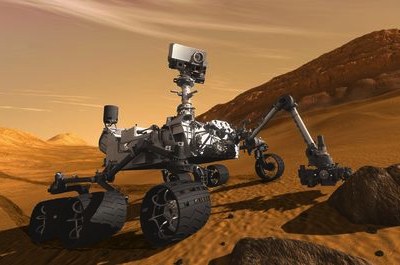Is it time to create a Mars Exploration Mission Directorate?by Chris Carberry
|
| Perhaps the time has come to contemplate the creation of a Mars Exploration Mission Directorate or at least some kind of mechanism to formalize a coordinated Mars exploration effort. |
The most significant aspect of the MPPG may not be the potential missions that it outlines, but rather that it represents a more coordinated approach to Mars exploration than many previous mission planning exercises. Specifically, the MPPG was designed to coordinate the efforts of the NASA Science Mission Directorate (SMD) and the Human Exploration and Operations Mission Directorate (HEOMD), as well as with the Offices of the Chief Technologist and the Chief Scientist. Coordination of this kind is essential for the future of Mars exploration.
Perhaps the time has come to contemplate the creation of a Mars Exploration Mission Directorate or at least some kind of mechanism to formalize a coordinated Mars exploration effort. If our policy is to send humans to Mars in the 2030s, we should pursue Mars exploration in as unified a manner as possible. Such an approach can create efficiencies that could save money in both the short and long term by ensuring that missions support one another, similar to how Mercury and Gemini missions supported Apollo goals.
Many times in the past, SMD and the human spaceflight directorates have seemed to be competitors for funding rather than partners for the future. And, while there is unquestionably still budgetary competition, there appears today to be much more unity of direction between these two directorates than in the past. This unity also extends well beyond the MPPG. It is clear that individuals at SMD and HEOMD want to expand cooperative efforts, specifically with regards to Mars exploration. What is needed is a formal mechanism to maximize the impact of joint SMD/HEOMD missions.
| If our official space policy is to send humans to Mars in the next couple of decades, one would hope that a unified approach to making this happen would be appealing to our policy makers in the White House and Congress. |
If we are committed to getting humans to Mars in the next 20 years, a coordinated approach is essential. This will require a more formal, long-term structure that not only better integrates efforts within NASA, but is also able to coordinate with other vital players such as commercial/industrial entities, international space agencies, and academia. If managed properly, it will create greater efficiency within NASA that is highly desirable in times of extreme budgetary pressure.
This is not something that NASA can decide on its own. It is something that will require support and buy-in from policy makers. If our official space policy is to send humans to Mars in the next couple of decades, one would hope that a unified approach to making this happen would be appealing to our policy makers in the White House and Congress.
Despite intransigence on Capitol Hill on virtually every major national issue, space exploration has historically been a non-partisan issue. If Congress and the administration would agree on a more unified approach to Mars exploration, we could be landing humans on the surface of Mars by 2030.
